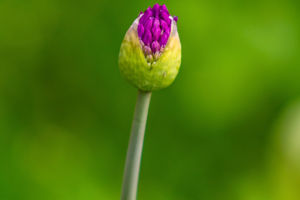Germination is a remarkable biological process through which plants emerge from seeds or fungi develop from spores.
This crucial stage of growth marks the beginning of a plant’s life cycle, and understanding its mechanisms offers insight into the complexities of nature.
Whether you’re a gardener, a student of biology, or simply curious about the natural world, exploring germination reveals the intricate interplay between seeds, spores, and their environment.
At its core, germination involves the transformation of a dormant seed or spore into a living, growing organism. For seeds, the process begins when environmental conditions are favorable—typically involving the right temperature, moisture, and light.
When a seed absorbs water, it undergoes a series of physiological changes. The seed swells, and enzymes become activated, initiating the breakdown of stored nutrients. These nutrients fuel the growth of the embryo, leading to the emergence of the radicle (the embryonic root) and the shoot.
The first step in seed germination is imbibition, where the seed takes in water, causing it to swell. This swelling breaks down the seed coat, allowing the radicle to push through the soil.
The radicle anchors the plant and begins to absorb water and nutrients from the soil. Next, the shoot emerges, seeking light to begin photosynthesis. This transition from a dormant state to active growth is not only a testament to the seed's resilience but also a vital process for the survival of the species.
In contrast, fungal germination involves spores, which are typically much smaller and can withstand harsher conditions than seeds. Spores are reproductive units that can be produced in two ways, depending on the species of fungus.
When conditions become favorable—such as adequate moisture and suitable temperatures—spores absorb water and begin to germinate. This process usually leads to the formation of a structure called the hypha, which is the main body of the fungus.
Fungi play a crucial role in ecosystems as decomposers, breaking down organic matter and recycling nutrients.
The germination of fungal spores is vital for this process, as it leads to the development of mycelium, the vegetative part of the fungus.
Mycelium spreads through the substrate, feeding on decomposing material and forming networks that can connect various plants and organisms in the soil. This interconnectedness highlights the essential role of fungi in maintaining ecological balance.
The timing and conditions for germination can vary significantly among species. For instance, some seeds require specific environmental cues, such as fire or cold temperatures, to trigger germination—a phenomenon known as seed dormancy.
This adaptation allows plants to survive in challenging conditions, ensuring that they only germinate when the likelihood of survival is high.
Moreover, human intervention in the germination process has led to advancements in agriculture and horticulture.
Techniques such as stratification (mimicking natural conditions to break dormancy) and hydroponics (growing plants without soil) have become increasingly popular. These methods enhance germination rates, leading to more robust and productive crops.
Germination is a critical and complex process that marks the transition from dormancy to active growth in plants and fungi. Whether through seeds or spores, this process is essential for the continuation of plant and fungal species, as well as the ecosystems they inhabit.
Understanding germination not only deepens our appreciation for nature’s resilience but also highlights the importance of maintaining the conditions necessary for these remarkable organisms to thrive.
By nurturing the environments in which they grow, we can ensure the survival of diverse plant and fungal species for generations to come.


